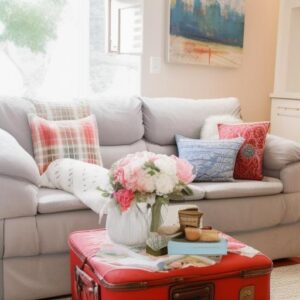European interior design has a rich and diverse history that has evolved significantly over the past century. This art form is deeply embedded in cultural influences, historical movements, and regional sensibilities.
From the Scandinavian minimalism that embraces simplicity, to the French elegance that exudes sophistication, and the Italian luxury that boasts opulence, each European region has beautifully contributed to the evolution of interior design trends. In this blog post, we will delve into the distinctive characteristics of these styles, explore iconic examples, and offer practical tips on incorporating European design elements into your own home.
1. Scandinavian Minimalism:
Scandinavian interior design is beloved for its simplicity, functionality, and effortless elegance. Inspired by the natural beauty of the Nordic region, this style places a strong emphasis on light, clean lines, and a muted color palette. Natural elements, such as wood and stone, are often incorporated to create a harmonious blend of functionality and aesthetics. The iconic designs of Arne Jacobsen and Alvar Aalto perfectly embody this style with their timeless furniture pieces and a thoughtful approach to space utilization.
2. French Elegance:
French interior design is synonymous with elegance, sophistication, and an impeccable eye for detail. A key characteristic of this style is the presence of ornate moldings, intricate furniture, and luxurious fabrics. French interiors seamlessly combine elements of traditional and contemporary décor, creating an atmosphere of refined opulence. The Palace of Versailles serves as a stellar example of French interior design, with its exquisite tapestries, gilded furniture, and elaborate chandeliers.
3. Italian Luxury:
Italian interior design is renowned for its grandeur, luxury, and opulent finishes. Influenced by the Renaissance period, Italian interiors often feature intricate details, elaborate frescoes, and sumptuous textiles. The use of marble, gold accents, and rich colors creates an atmosphere of unmistakable luxury. Villa Farnese in Rome showcases the epitome of Italian interior design, with its ornate ceilings, frescoed walls, and meticulously crafted furniture.
4. Historical and Cultural Influence:
The evolution of European interior design is deeply intertwined with historical and cultural influences. For instance, the rise of the Bauhaus movement in Germany in the early 20th century heavily impacted modern European design, emphasizing functionalism and simplicity. Additionally, the cultural heritage of different regions shines through in their interior design styles, be it the Nordic connection to nature, the French appreciation for art, or the Italian fascination with classical architecture.
5. Transforming Living Spaces:
European interior design has the remarkable ability to transform living spaces into stunning showcases of beauty and functionality. Incorporating the essence of different European styles creates an environment that is visually appealing and harmoniously balanced. By carefully selecting furniture, colors, and textures, a Scandinavian-inspired home can exude warmth and simplicity, while a touch of French elegance can elevate any space and make it timeless. Italian luxury, when executed tastefully, can infuse opulence and elegance into any room, evoking a sense of grandeur.
6. Practical Tips for Incorporating European Design Elements:
– Embrace light colors and natural materials to achieve a Scandinavian minimalist look.
– Incorporate French elegance with ornate moldings, luxurious fabrics, and chandeliers.
– Add classical architectural elements, such as columns or arches, to infuse Italian luxury.
– Pay attention to details, such as light fixtures and hardware, to elevate the overall design.
– Introduce elements of European design through furniture, textiles, and artwork.
– Balance aesthetics with functionality, ensuring that the space serves its intended purpose.
European interior design has continuously evolved over the past century, leaving an indelible mark on the world of aesthetics and functionality. From Scandinavian minimalism to French elegance and Italian luxury, each style offers unique characteristics and influences. Drawing inspiration from history, culture, and natural elements, European design creates mesmerizing living spaces that harmoniously blend functionality with aesthetics. By incorporating practical tips and elements from these styles, you can transform your own home into a captivating and inviting space that captures the essence of European interior design.
Creating Tranquility – The Principles and Elements of Scandinavian Interior Design



